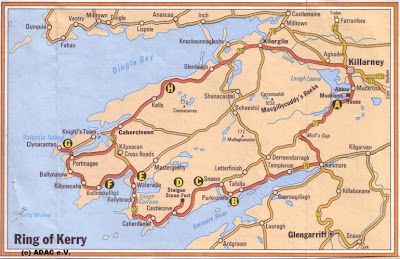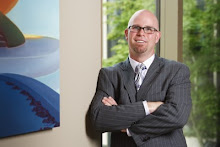Let's start with the evening of Day 7. How can so many people fit in one place at one time? Soho was packed wall to wall last night with people dining, going to the theater, drinking and bar hopping, hanging out at coffee shops, and just walking the streets. Which were filled from one side to the other, I don't know how anyone could possibly have driven the streets, it was very exciting and full of energy. We had some great Sushi and Tempura at a little place called
Kyoto. It was packed and loud, but the food was very authentic and fresh.
Day 8 started with an awesome breakfast at the Soho Hotel, this place really knows how to do things, the fresh fruit they had laid out in the morning was spectacular, and they had freshly made granola and fresh squeezed smoothies.
I have to comment that the British and Irish both seem to have a fondness for toast. Every morning we get asked before we have even sat down if we want toast, and well we aren't big toast eaters, and this seems to bring much distress to our servers.
The hotel is very odd, down a small alley, no markings with the hotel name, small drop-off zone and lobby. The paparazzi were out front when we arrived, I am sure they were disappointed that we were not so famous. I'm told it's popular with the music and movies stars, although we haven't seen anyone famous yet.
After breakfast we went to the
British Museum, just a short walk from the hotel. It's amazing to see everything the British have plundered, I mean collected, over the last several hundred years. Want to see the statuary that decorated the Parthenon, don't go to Athens, it's here. How about the Rosetta stone, not in Egypt, as were, it seemed, every mummy, statue of a Pharaoh or god, and anything else of importance in Egyptian history. I guess they took everything that wasn't nailed down, and if it was they just used dynamite to free it up. If I were an Egyptian I'd be angry.
They even moved entire Greek and Syrian temples, it was just amazing how they could move such huge pieces.
The museum was having a special exhibition on the life of
Montezuma (or more appropriately Moctezuma), the last Aztec emperor before the Spanish arrived. It was a great exhibit, well worth the entry cost.
After the museum we headed to the underground, one thing Clark and I love to do when traveling is to use the local subway system to get around. So far the
London Underground has been easy to use and navigate. I bought a special iPhone application for the subway system and has really helped plan our routes.
Our next stop was the area around the Parliament buildings, we saw Big Ben, Parliament, and then took a ride on the London Eye. If there is a long line to ride the Eye buy a Fast Track ticket, it costs a few more Pounds, but we were on the ride in just a few minutes, and it seemed like they didn't put as many passengers in the Fast Track capsules. We had great views over all of London, it was very cool.
After our ride we headed back into Soho for lunch. We ate at
Cafe Boheme in Soho, a nice French Bistro, very casual, great food and service. Then back to the hotel for a spot of tea and a nap before we head out later tonight for dinner. Based on a great recommendation from Joanna Heathcote we are going to a Chinese restaurant named
Hakkassan, it is supposed to be out of this world good!























































